Keen amateur photographers and
professionals have often turned to the use of a filter to alter or
enhance a scene in some way. I say “have” because along with the
advent of digital photography there also came digital image
processing, and with it a myriad of tools that can negate the need
of a filter. However! . . .
Filter types
Photographic filters come in two basic formats, i.e. the
threaded and square varieties. The latter became hugely popular when
marketed by the Frenchman Jean Coquin – of Cokin filter fame – in
the late 1970’s.
Given these two filter formats,
we’ll evaluate their advantages and disadvantages before going on to
cover a few of the many types of filters that abound.
The threaded filters are long
established and are arguably better quality than their square
counterparts, as they utilize glass, and not an ‘organic glass’
known as CR-39 polymer which is used for square filter production.
Latest score: Threaded filters 1 Square filters 0
The drawback with threaded
filters is if you own two or more lenses, it’s likely that the
diameter of the filter thread on the leading edge of each lens will
be different. This differing filter thread size means that you will
have to buy a full set of filters for each lens you own, and this
can get rather expensive! The square filter on the other hand has
the advantage of being used on all of your lenses regardless
of the thread size. This is achieved via interchangeable threaded
adapters that snap into a universal mount onto which your square
filter slides. You only need one adapter ring for each thread size
needed, with the cost of the adapters being considerably less than
buying several filter sets. Score update: Threaded filters 1
Square filters 1
The threaded filter
manufacturers used to claim that the use of glass provided better
quality than the organic glass type filters, but in recent years
some of them have turned to manufacturing square filter systems too!
Score update: Threaded filters 1 Square filters 2
Filter basics
O.K., so now down to filter basics . . . a few of them anyway. A
good rule of thumb is if the filter you are using doesn’t
improve the image, then don’t use it! That’s my main criteria
for filter use in a nutshell.
Most of you will have been
advised at some point to leave the ultra violet (UV) or skylight
filter on your lens at all times so as to protect the front lens
element against hard knocks. “Better to lose the filter than your
expensive lens”, they say. I’m sure that has proved to be good
advice for a few, but for the majority it’s just another expense. In
case you’re wondering, both of these filters filter out ultra violet
haze, especially in the mountains. So does a polarizer.
Sure, it can be said that we
can get similar effects via digital processing of an image, but
putting that aside for now these are the filters I recommend most
for general color photography . . .
Polarizer: It will darken blue skies without affecting the
foreground colors other than a little saturation. It also reduces
or eliminates reflections on water and glass, and reduces haze. If
you have polarized sunglasses you’ll be able to observe the same
effect. A polarizer works best when the sun is at a 45 degree angle
to the way you’re facing, but also works, albeit to a lesser degree,
from other angles too.
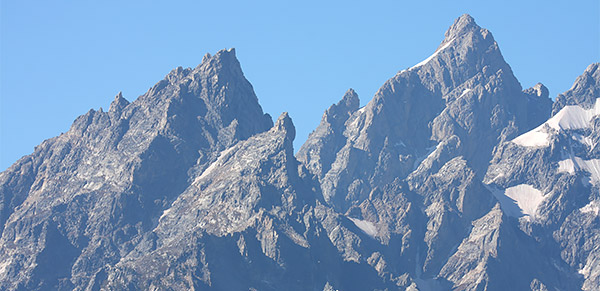
Grand Teton national park, Wyoming: Hazy day, no
filter
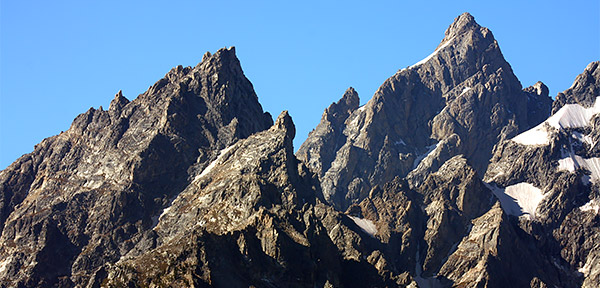
Moments later, but this time with a polarizing filter
attached.
Neutral density: Use to lengthen exposures for dreamy effects
such as ‘soft’ water, ‘streaking’ clouds and suchlike. The denser
[darker] the filter, the better. Variable neutral density filters
are a fairly new technology, but have the added advantage of what
could be termed as multiple ND filters packed into one filter.
| |
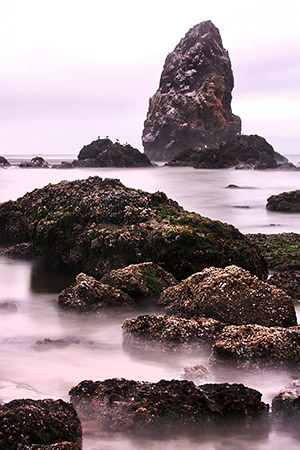 |
|
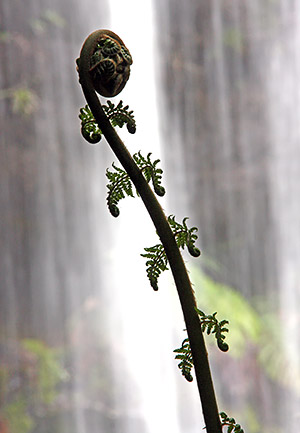
|
|
| |
A neutral density filter gave me a
long 20 second exposure at f22, and rendered the moving
water as a pleasing mist or fog. The location is Cannon
Beach, Oregon. |
|
For this shot in Tasmania I wanted to
blur the waterfall in the background, and the use of a
neutral density filter gave me an exposure of one tenth
of a second at f16. |
|
| |
|
|
|
|
Graduated gray/Split neutral density: Use to darken bright
featureless skies in landscape pictures. These filters are darker at
the top fading to clear in the center to give a pleasing tone to
what would probably be a blank sky. They come in all sorts of
colors, pale orange is useful at sunset, but again I suggest that
you keep it natural starting with gray.
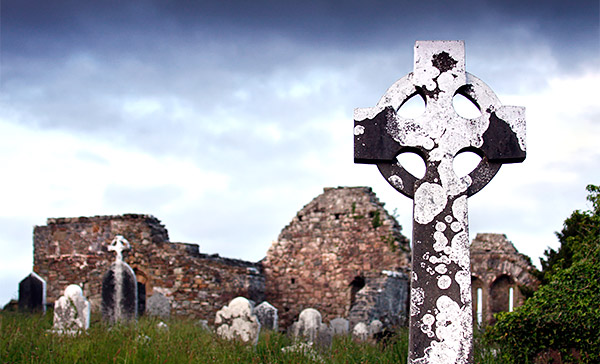
County Kerry, Ireland: The graduated gray filter also
covered the top of the cross, but I was able to lighten it up with
software.
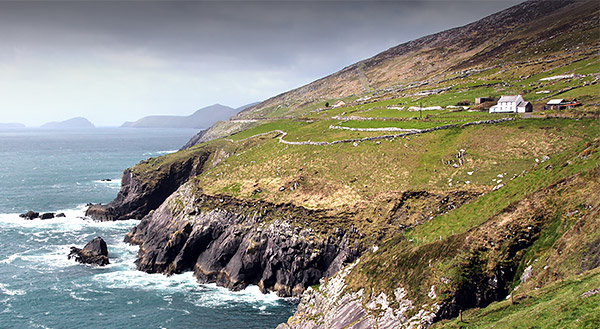
County Kerry, Ireland: On overcast days the sky is a
dull white, and the use of a grad gray filter adds some texture and
drama.
When it comes to graduated
filters, square filters have an advantage over threaded in that the
filter can slide up and down vertically to cover the exact area of
the sky you wish to cover. This isn’t possible with threaded
filters. Score update: Threaded filters 1, Square filters 3
Easy does it
Unfortunately, the tendency for most folk when they purchase a new
filter is to over-use it. Sunsets and landscapes taken through red
and orange filters are so garish that their lasting impact is brief.
However, these same colors used in black and white photography will
darken skies dramatically. Then again, one does have digital
processing with which to add any effect you so wish.
I refuse to be blinded by
the facts!
Even though square filters have the edge over threaded I must
confess to using the latter! I have a large collection of square
filters that have been napping undisturbed in the garage for a
number of years, mainly because the square system polarizer – which
happens to be round filter – would fall out of the holder all too
frequently. My other go to filters are the neutral density and
graduated/split neutral density. Final score: Threaded filters 2
Square filters 3
In conclusion, the message over
and over again will always be for whatever filter you use, keep it
natural!

Remember that whatever you photograph, the end result is limited only by your imagination!